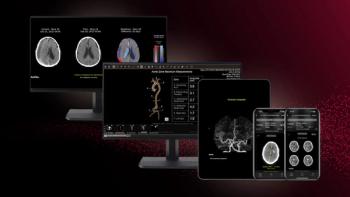
Radiologic Features of Small Pulmonary Nodule May Determine Cancer Risk
CT screening of small pulmonary nodules may help determine cancer risk.
Clinically relevant radiologic features that can be easily scored in the clinical setting may help determine lung cancer risk among participants with small pulmonary nodules (SPNs), according to a study published in
Researchers from China and the United States sought to identify features associated with lung cancer risk using data and images from the National Lung Screening Trial (NLST).
The researchers examined radiologic features in SPNs in baseline low-dose CT screening studies that did not meet NLST criteria to be considered a positive screening examination. They identified SPNs for 73 incident case patients who were given a diagnosis of lung cancer at either the first or second follow-up screening study and for 157 control subjects who had undergone three consecutive negative screening studies. Multivariable logistic regression was used to assess the association between radiologic features and lung cancer risk.
The results showed that nine features were significantly different between case patients and control subjects. Using backward elimination followed by bootstrap resampling, the researchers identified a reduced model of highly informative radiologic features with an area under the receiver operating characteristic curve of 0.932, a specificity of 92.38%, and a sensitivity of 76.55% that included total emphysema score, attachment to vessel, nodule location, border definition, and concavity.
The researchers concluded that this set of clinically relevant radiologic features can be easily scored in the clinical setting and may be of use to determine lung cancer risk among participants with SPNs.
Newsletter
Stay at the forefront of radiology with the Diagnostic Imaging newsletter, delivering the latest news, clinical insights, and imaging advancements for today’s radiologists.



























